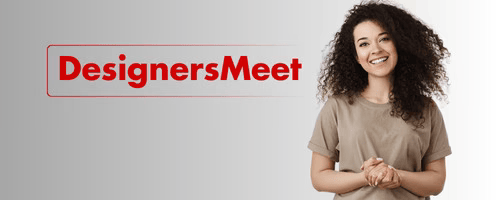In the competitive world of design, your portfolio is your most powerful tool. It’s not just a collection of work—it's your personal brand, your resume, and your proof of skill all rolled into one. Whether you're a freelance designer or applying for a creative job, a well-crafted graphic design portfolio can open doors and attract the right clients or employers.
In this guide, we’ll explore how to build a strong graphic design portfolio that highlights your talents, tells your story, and makes a lasting impression.
1. Understand the Purpose of Your Portfolio
Before you start building, identify the goal of your portfolio. Are you:
-
Looking for a full-time graphic design job?
-
Applying for a design internship?
-
Trying to get freelance clients?
-
Showcasing your brand for personal marketing?
Understanding your audience helps you tailor your content accordingly.
Keyword Highlight: graphic design portfolio, design career goals, portfolio purpose
2. Choose the Right Projects to Showcase
Quality over quantity is key. Instead of overwhelming your viewer with every piece you’ve ever designed, select 6 to 10 of your best projects. These should:
-
Demonstrate a range of skills (branding, layout, UI, illustration, etc.)
-
Reflect your creative process
-
Be relevant to your target audience or industry
-
Include both personal and client work (if available)
If you don’t have client work yet, create mock projects or redesign existing brands.
Keyword Highlight: best design projects, design case studies, portfolio pieces
3. Present the Process, Not Just the Final Result
Clients and employers want to see how you think. For each project, include:
-
A short brief or project goal
-
Your role in the design
-
The steps taken (research, wireframes, sketches)
-
The final outcome
-
Tools used
Adding your design thinking makes your work more engaging and builds credibility.
Keyword Highlight: design process, project breakdown, creative thinking
4. Keep the Layout Clean and User-Friendly
Your portfolio itself is a design project. Use clean layouts, consistent typography, and white space to guide the viewer’s eye. Whether it’s a PDF or a website, your portfolio layout should be:
-
Easy to navigate
-
Responsive (for online portfolios)
-
Visually consistent
-
Fast-loading (if hosted online)
Let your work shine—avoid clutter or flashy animations that distract from your designs.
Keyword Highlight: portfolio layout, user-friendly design, online design portfolio
5. Include a Strong About Page
Your About page is your chance to introduce yourself. Keep it professional but personable. Include:
-
A short bio
-
Your design background
-
Skills and tools you’re proficient in
-
Awards, certifications, or education
-
A high-quality photo (optional)
Don’t forget to add a downloadable resume and contact information.
Keyword Highlight: graphic designer bio, design skills summary, portfolio about page
6. Use the Right Platform
There are multiple ways to build your portfolio:
-
Website builders: Wix, Squarespace, Webflow
-
Design communities: Behance, Dribbble
-
Custom-coded websites for complete control
-
PDF portfolios for job applications
Choose the format based on your goals and audience. For maximum reach, an online portfolio website is recommended.
Keyword Highlight: online portfolio platforms, best portfolio websites, design hosting tools
7. Update It Regularly
A portfolio is not a one-time task. Update it every few months with your latest and best work. Remove outdated or weak projects. This shows that you're actively working and evolving as a designer.
Keep track of the metrics too—track visits if it's a website, and ask for feedback from peers or mentors.
Keyword Highlight: update your portfolio, fresh design work, design evolution
8. Add Testimonials and Results
If you’ve worked with clients or teams, ask for client testimonials. These give your work added credibility and show your ability to meet goals. If you helped a brand grow social media engagement or increase sales, include those results.
Numbers and client praise go a long way in building trust.
Keyword Highlight: client feedback, design testimonials, project results
9. Make It Personal and Memorable
Add a personal touch that reflects your personality or style. Maybe it’s a quirky design, interactive elements, or a memorable color palette. Clients don’t just want skills—they want someone who stands out.
Think of your portfolio as a reflection of your brand identity.
Keyword Highlight: unique design style, personal branding, memorable portfolio
Conclusion
Building a strong graphic design portfolio is essential for showcasing your talent and attracting the right opportunities. By curating high-quality work, presenting your creative process, maintaining a clean layout, and adding personal touches, you can create a portfolio that leaves a lasting impression.
At DesignersMeet.com, we encourage designers to continually refine their portfolios and share them with the community. Whether you’re just starting or refreshing your portfolio, use these tips to make it shine.




